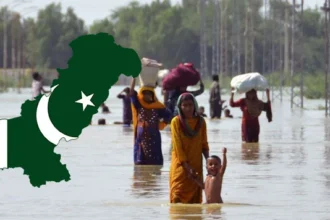Extreme Summer Weather Events Have Tripled Since 1950, Study Finds
Climate change is dramatically reshaping summer weather patterns, with new research revealing that events linked to stalled atmospheric waves known for fueling deadly heatwaves, droughts, and floods have tripled over the past 75 years.
A recent study published in the Proceedings of the National Academy of Sciences found that in the 1950s, Earth typically experienced one such planetary wave event per summer. Today, that number has jumped to three. These wave patterns have been connected to some of the most severe weather disasters in recent history, including the 2021 Pacific Northwest heatwave, the 2010 Russian heatwave and Pakistan floods, and the 2003 European heatwave.
Planetary waves, which are large scale patterns in the jet stream, regularly circulate around the globe. But under certain conditions, they intensify and become “locked” in place, a phenomenon called quasi-resonant amplification (QRA). When this happens, regions can experience prolonged and extreme weather weeks of unrelenting heat or rain without relief.
Michael Mann, a climate scientist at the University of Pennsylvania and a co-author of the study, explains that when these waves amplify, the jet stream becomes unusually wavy, leading to persistent high-pressure or low-pressure systems. “In summer 2018, for instance, a high-pressure system over the U.S. West and a low-pressure system in the East stayed put for a month resulting in intense heat and wildfires out west, and excessive rainfall in the east,” said Mann.
The root of this growing problem, the study suggests, lies in human driven climate change. The Arctic is warming at a rate three to four times faster than the rest of the planet. This reduces the temperature contrast between the equator and the poles, weakening the jet stream and increasing the likelihood of these amplified, stationary wave patterns.
Jennifer Francis, a climate scientist at the Woodwell Climate Research Center, who was not involved in the study, emphasized how this mechanism adds another layer of disruption to the climate system. She noted that these locked wave patterns intensify already worsening summer extremes, making prolonged heatwaves, droughts, and heavy rain more frequent.
This phenomenon differs from the jet stream behavior linked to winter extremes, which Francis has studied in relation to the polar vortex. However, both patterns are affected by the broader destabilization of atmospheric currents due to global warming.
Another contributing factor is El Niño a natural warming phase in the Pacific Ocean known to alter global weather patterns. According to Mann, summers that follow an El Niño event, like the summer of 2024, are more prone to persistent jet stream patterns that trap extreme weather.
What’s especially troubling is that climate models have consistently underestimated the rise in summer extremes. Mann believes this is because most models fail to adequately simulate the effects of QRA and the way planetary waves behave under changing climate conditions.
Francis warned that without a significant reduction in greenhouse gas emissions, the trend will only accelerate. “We’re looking at longer, more intense, and more widespread heatwaves,” she said. “Droughts will deepen, and agriculture will suffer.”
This study underscores yet another way that human activity is pushing the climate system into uncharted and dangerous territory.












